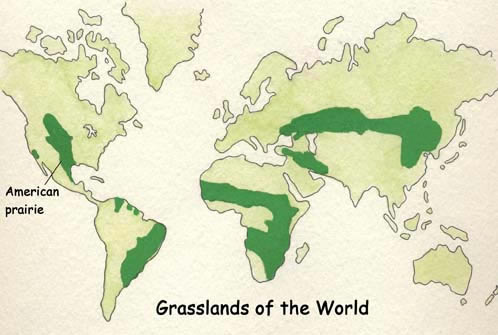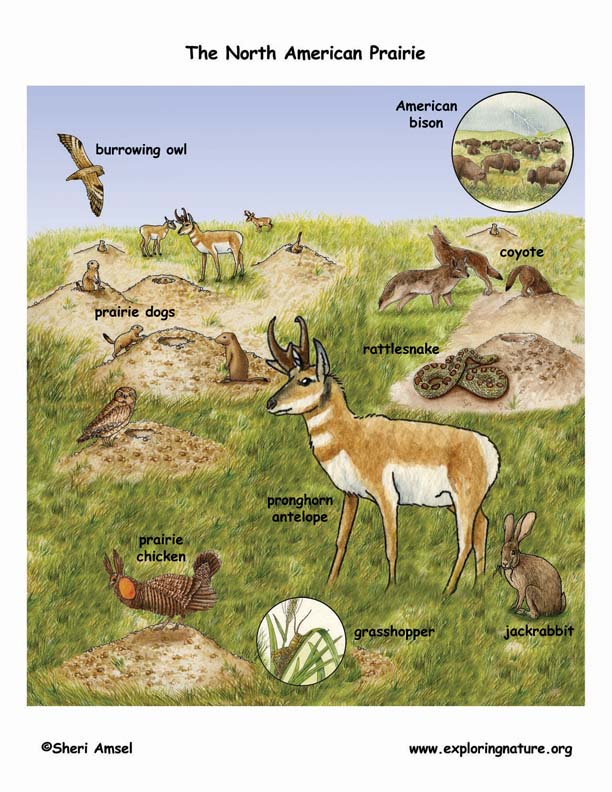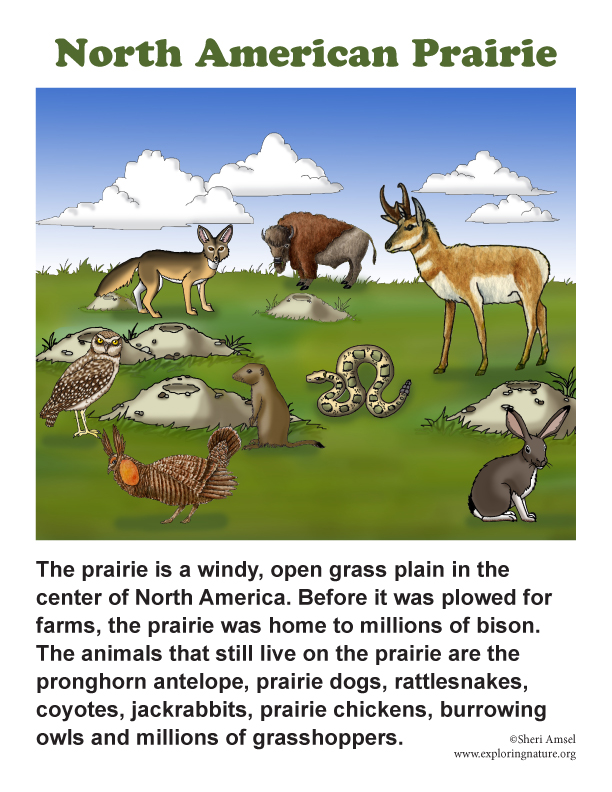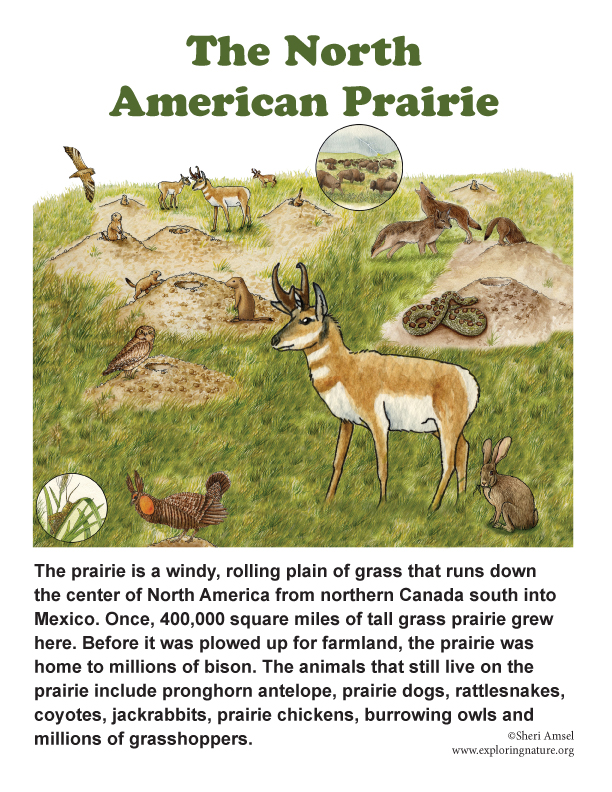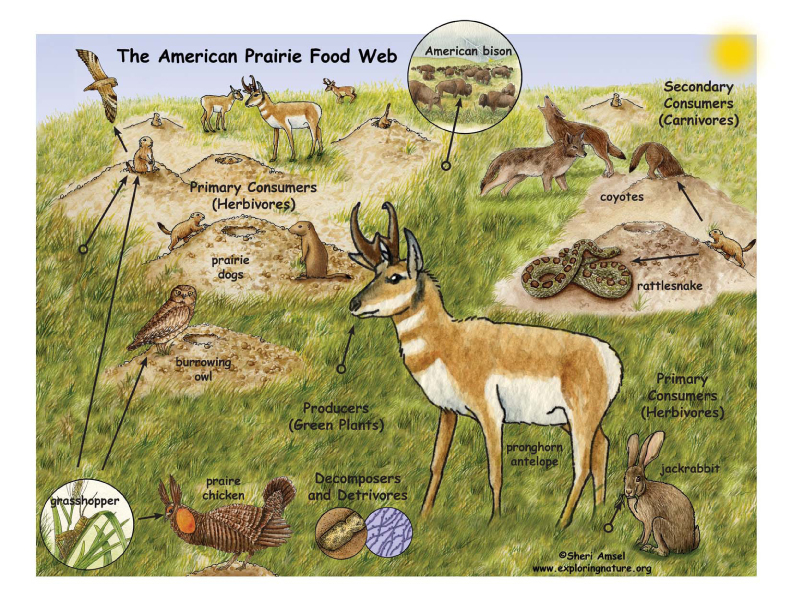

The North American prairie covers much of the central and western part of the U. S. to the Rocky Mountains and spreads into northern Canada and down into Mexico.
There were three types of prairies. The tallgrass prairie grew grasses that could reach 6-10 feet tall in summer and was the easternmost section of the grasslands. The shortgrass prairie that was located in the driest part of the plain in the western edge against the Rocky Mountains, where grass grew only a foot tall. The last was a mixedgrass prairie, found between them. There is one thing that all types of North American prairie have in common, the wind blows all the time. Once 400,000 square miles of tall grass prairie covered North America. Now a very small amount is left. The rest has been plowed under for farms and development.
Years ago, before the prairie was pioneered, great herds of bison roamed the huge grassland. Their numbers were so great that the ground would shake as they passed. As the railroads spread across the prairie, people shot millions of bison for their meat, hides, and just for sport. Their numbers fell fast. By the end of the 1800s, the bison were almost extinct. Pronghorn Antelope still graze in small herds on the prairie. When they are scared, the pronghorn run very fast across the prairie to safety. Huge prairie dog towns spread out, covering acres of grassland. Food for the black-footed ferrets, owls, and snakes, the prairie dogs were an important part of the grassland food chain. Pioneers began destroying prairie dog colonies to make rooms for farms and ranches. As the prairie dogs died off, the black-footed ferret began to disappear as well and is now thought to be almost extinct in the wild. Every spring the courtship dance of the prairie chicken begins. At sunrise, the male prairie chicken dances and clucks, filling its bright orange air sacs to show to any females in the area. Rattlesnakes on the prairie eat insects and rodents and sleep away the winter in prairie dog dens. Coyotes are another prairie predator. They eat rodents, birds, lizards and domestic animals killed by winter cold and snow. Jackrabbits are also made for the grassy plain. Long ears allow them to hear danger from far off. In a flash they can speed away, covering ten feet with each jump. But of all the animals of the American prairie, probably the most abundant and hardy will always be the prairie grasshopper. In a year when there is a grasshopper outbreak, they are blamed for millions of dollars in crop losses.
The prairie is not just grass. There are many species of wildflowers, shrubs and small trees.
When you research information you must cite the reference. Citing for websites is different from citing from books, magazines and periodicals. The style of citing shown here is from the MLA Style Citations (Modern Language Association).
When citing a WEBSITE the general format is as follows.
Author Last Name, First Name(s). "Title: Subtitle of Part of Web Page, if appropriate." Title: Subtitle: Section of Page if appropriate. Sponsoring/Publishing Agency, If Given. Additional significant descriptive information. Date of Electronic Publication or other Date, such as Last Updated. Day Month Year of access < URL >.
Amsel, Sheri. "North American Prairie" Exploring Nature Educational Resource ©2005-2024. December 13, 2024
< http://www.exploringnature.org/db/view/1713 >
